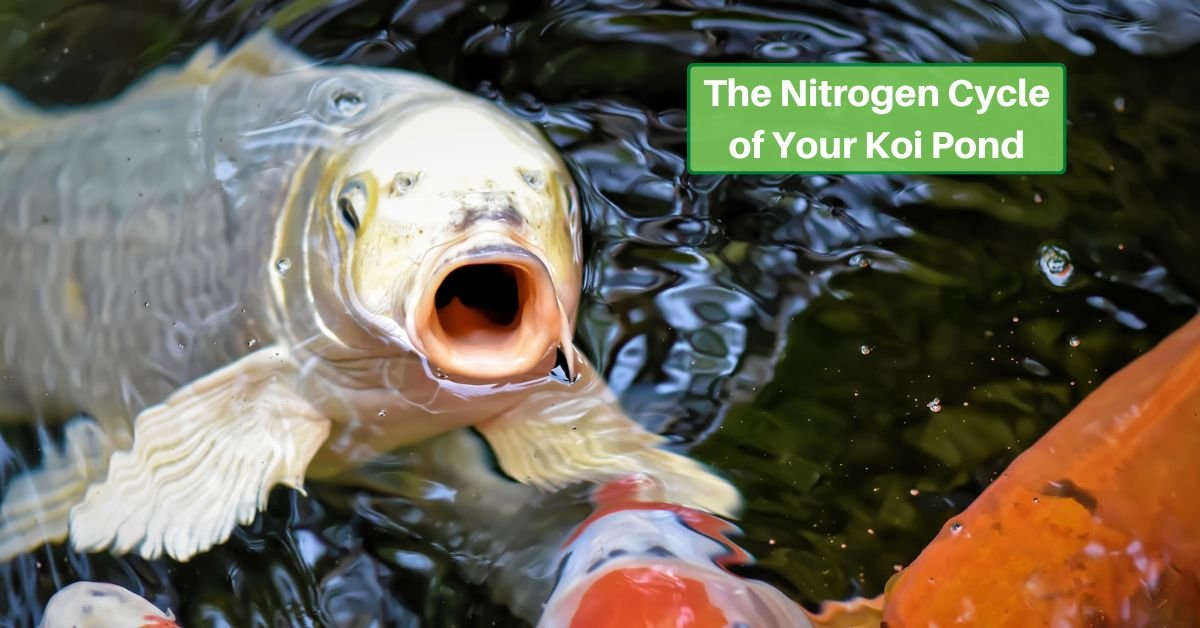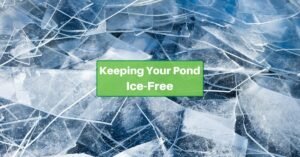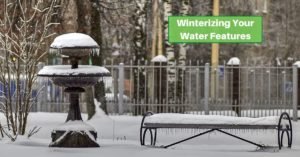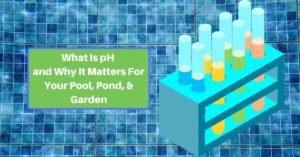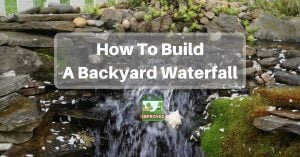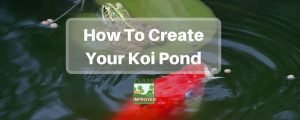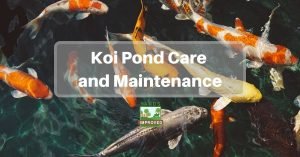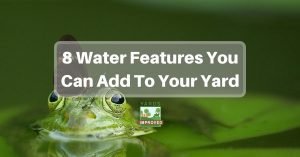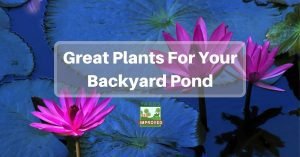To keep your pond and its inhabitants healthy, proper care and maintenance of the nitrogen cycle are essential. It requires a bit of knowledge, a bit of patience, and general maintenance. But once you get started and establish a cleaning routine, you’re well on your way to keeping your koi in great shape!
We’ll help you understand why the nitrogen cycle is important, how it works, and how to make sure it’s working well in your pond.
If you already know about the nitrogen cycle for an aquarium, there’s no difference here; it’s the same cycle on a larger scale. But if you’d like to review the principles, please read on!
Why Understanding The Nitrogen Cycle Is Important For Koi
The nitrogen cycle is a process by which chemicals that are harmful to fish are converted into less harmful ones. There are a few steps in this process.
It doesn’t take much to understand why there might be issues in a closed system like a koi pond. Even with a filter, the fish live in the same water all the time (give or take a little from rain or when you “top off” the water level to account for evaporation). And it’s also where all their waste ends up – which isn’t the ideal situation for any living thing!
Over time, the buildup of chemicals from waste can sicken and even kill fish and other creatures that live in the pond.
Fortunately, natural processes take care of most of the work here. But these processes may need a boost to get started. You’ll also want to check on it and make sure everything is going smoothly.
Ammonia, Nitrites, and Nitrates – Oh My!
There are three chemicals to be concerned about when it comes to pond water: ammonia, nitrites, and nitrates. The first two are the most harmful to your fish.
Ammonia comes mainly from the fish’s solid and liquid waste. It’s also produced by the breakdown of organic matter like leaves and leftover fish food. It’s a powerful chemical and can build up rapidly.
However, ammonia can be broken down into nitrates. This is done by a type of bacteria known as Nitrosomonas. But like all living things, the Nitrosomonas also produce waste – and theirs include nitrites.
Nitrates are more dangerous for fish than ammonia. Ammonia can “burn” the fish if its concentration gets too high. Nitrates deprive fish of the ability to absorb oxygen, basically suffocating them.
But another type of bacteria – this one called Nitrobacter – turns nitrates into nitrite. Nitrates help nourish plants and are harmless to fish. The only problem you may have with them is that they can nourish green algae if there are not enough plants to consume them.
In short, that’s the nitrogen cycle – fish and decomposing material produce ammonia; the ammonia is turned to nitrites, the nitrates to nitrates, and the nitrates are absorbed by plants.
Why Is There A Risk?
If the nitrogen cycle is that simple, what’s the problem? Well – it’s all about timing.
When you introduce fish to a pond (or aquarium), they start going about their business – and doing their business – right away. But there aren’t any bacteria yet to run the cycle! Of course, they had little or no food before, so there was no reason for them to be there.
It takes time for these microscopic creatures to grow and develop. Of course, first will come the Nitrosomonas since their food source is present. Once they’ve converted a good amount of ammonia into nitrites, the Nitrobacter will begin to grow, feasting on the nitrates.
Getting Started
It takes a few weeks for these bacteria colonies to develop. So it’s important to go slowly when adding fish to the pond. One or two fish is a great way to start; that will allow the bacteria to grow and develop.
Most pond and pet stores also offer a “starter” bottle of bacteria to get your nitrogen cycle underway; you can even buy it online. These are bottles of bacteria in liquid, just waiting to find a new home.
Since so much water – along with waste – is pulled through your pond’s filter, the filter material is a prime place for the bacteria to make its home. So it’s important to not simply dispose of all your filter material at once or to wash it with chlorinated water. This will kill the bacteria and put you back at the starting point – or even worse. Instead, rinse it with pond water when necessary.
It takes 2 to 6 weeks to get the nitrogen cycle fully underway when the temperature is above 70° F (21° C); it may take longer at lower temperatures. Even after that, though, you never want to add large amounts of fish at one time so that the bacteria colonies have a chance to grow large enough to support their additional duties.
Testing Your Pond Water
To make sure everything is cycling smoothly in your pond, you can use simple tests for ammonia and nitrates. Most of them involve adding a few milliliters of water to a test tube along with a couple of drops of a reagent, then comparing the color to a chart.
The goal is to reach a level of zero for all three components. The acceptable range for each is:
- Ammonia: 0 to 0.25 parts per million (ppm)
- Nitrates: 0 to 0.50 ppm
- Nitrites: 0 to 0.25 ppm, although this matters far less than the other two.
In the beginning, we suggest testing every week; once your fish are there and levels seem constant, you can switch to every two weeks or even monthly.
You can find these test kits on Amazon, in pet stores, or in big-box hardware stores.
Wait – You Haven’t Mentioned Nitrogen . . .
So, after reading this, you may be wondering what’s up with the name, since nitrogen doesn’t even get a mention in any of this.
Ammonia is made up of nitrogen and hydrogen (NH3). Nitrate is NO-3, and Nitrite is NO-2.
Since each of these is a compound of nitrogen, the whole process earns the name “nitrogen cycle.”
Keeping Your Pond Healthy For Fish
Once the nitrogen cycle is started, you’re well on your way to having happy, healthy koi. But it’s important to pay attention to make sure the cycle keeps running smoothly.
Here are some tips to keep your pet bacteria (and fish!) in good shape:
- Don’t overfeed the fish;
- Remove dead plants, fallen leaves, and other debris regularly;
- Test the water once or twice a month; more often if there are changes like adding new water, heavy rain or snow melt, or new fish;
- Don’t add too many new fish at one time;
- Test at least once a month to make sure the ammonia and nitrate levels are in the proper ranges;
- Don’t replace large quantities of water all at once, as it can shock and kill bacteria;
- Don’t remove or clean all your filter material at once.
Want to learn more about caring for your koi pond? Check out this article.
Conclusion
It takes a little bit of work to make your pond hospitable to its scaly residents. A big part of that is making sure the harmful chemicals in their waste get converted into less harmful matters that can even nourish plants. It’s important to understand the nitrogen cycle; once you have it running smoothly, the pond will be a great home for your koi!

